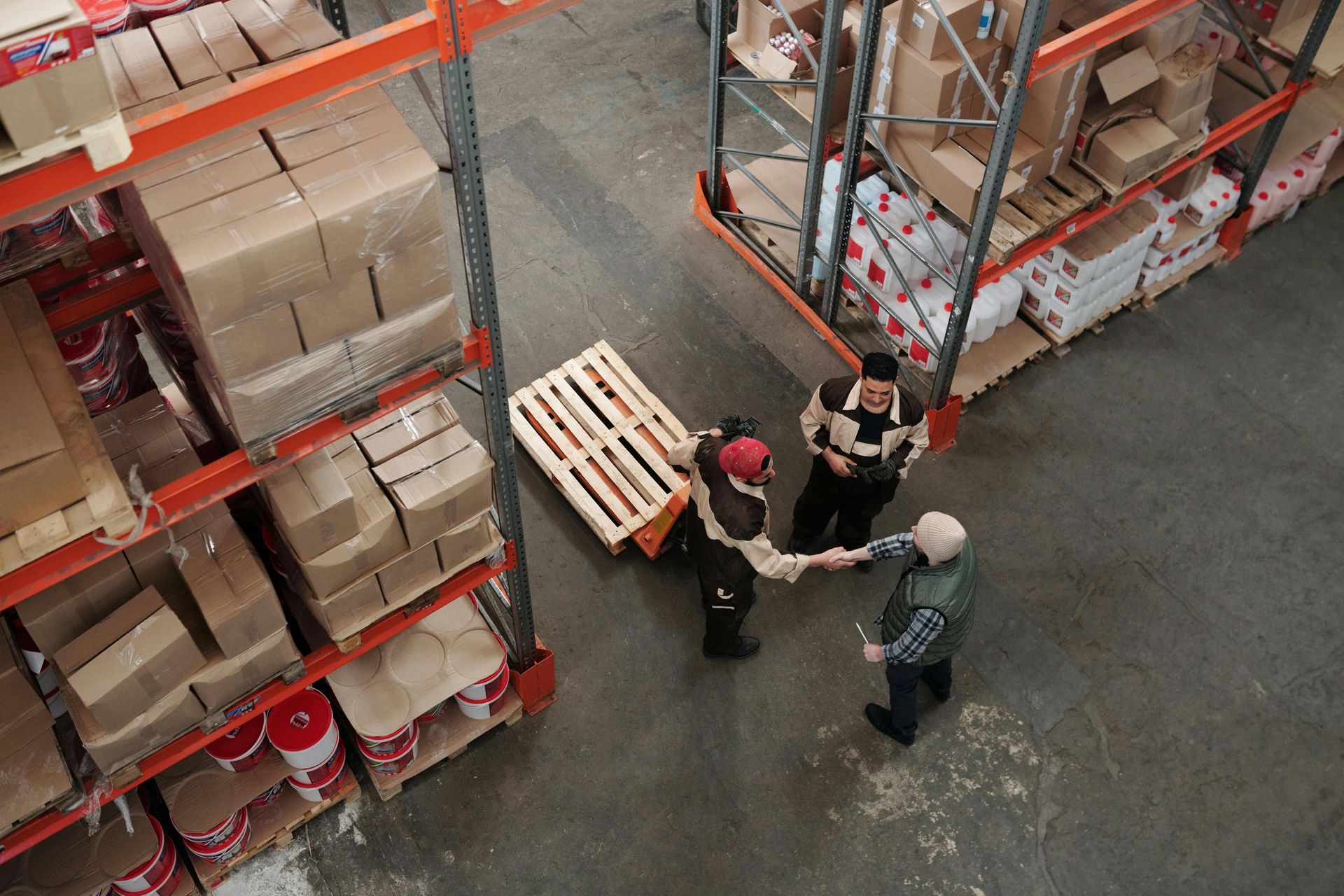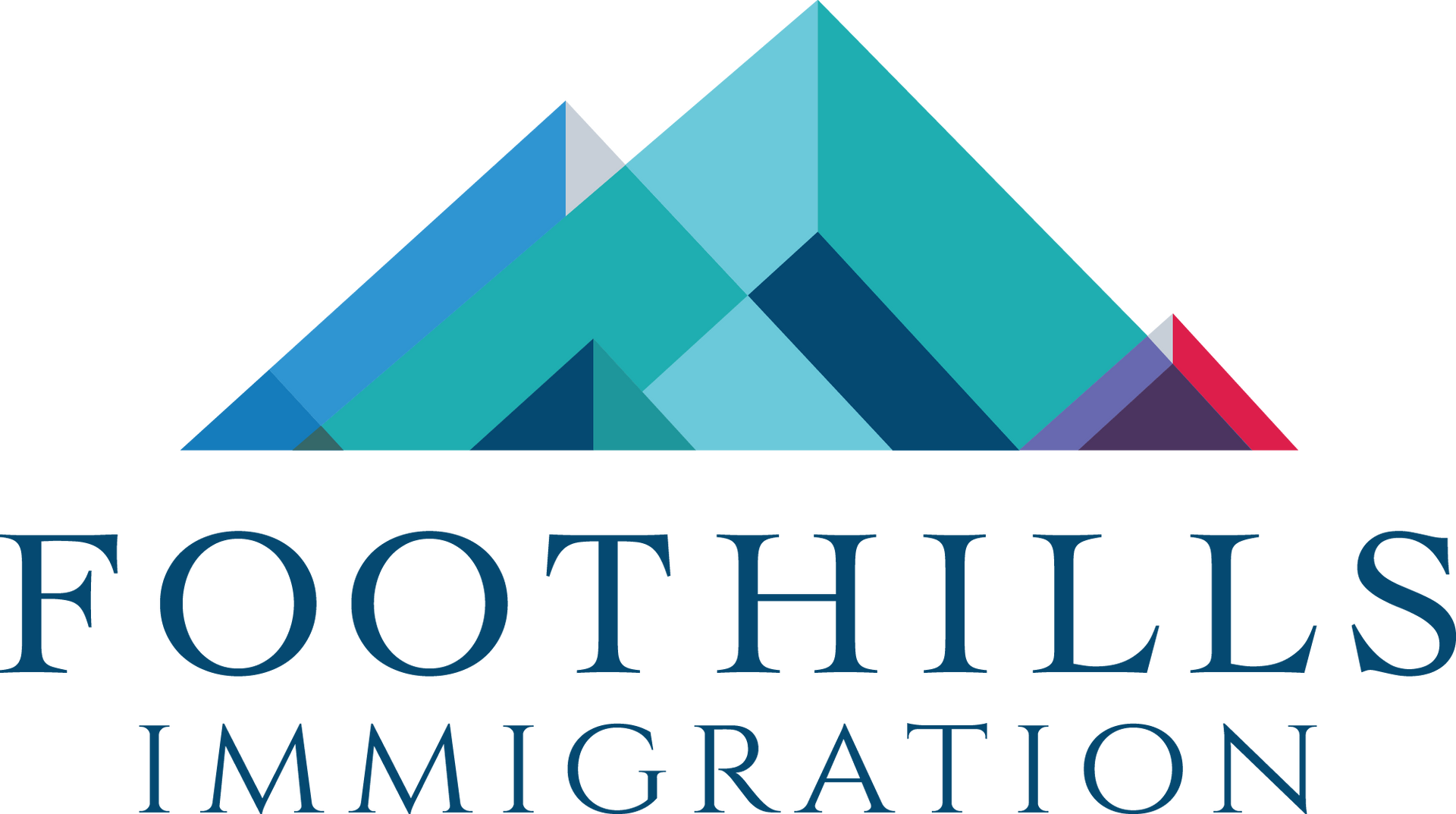Immigration News
Search The Blog

Important Updates to Canada’s LMIA Process in 2025: Key Dates and What Employers Must Know. Canada’s Labour Market Impact Assessment (LMIA) system underwent several critical updates starting in late 2024 and continuing into 2025. These changes aim to better align foreign worker hiring with regional labor market needs and protect Canadian jobs, especially in sectors and areas with elevated unemployment. If you’re an employer looking to hire temporary foreign workers, understanding these updates and their timelines is essential to ensure compliance and efficient hiring. What is LMIA and Why Does it Matter? The Labour Market Impact Assessment is a government process designed to evaluate whether hiring a foreign worker will positively or negatively impact the Canadian labour market. Before you can employ someone from outside Canada, you must prove that no qualified Canadian citizens or permanent residents are available for the role — this approval is known as a positive LMIA. Here’s why a LMIA is important: Purpose : Employers must prioritize hiring Canadians and permanent residents before turning to foreign workers. Goal : The LMIA process protects Canadian jobs while allowing businesses to address real labour shortages. Governing Body : The process is overseen by Employment and Social Development Canada (ESDC). Employer Requirements : To receive a positive LMIA, employers must demonstrate genuine recruitment efforts, such as advertising job openings online or in print. Justification : Employers need to explain why no suitable Canadian or permanent resident candidates were found. Fair Treatment : The LMIA ensures foreign workers receive wages and working conditions on par with Canadians in comparable roles. Workplace Standards : Employers must provide safe and fair working environments for all employees, including foreign workers. Market Balance : LMIA helps maintain a fair balance between meeting business labour needs and protecting Canadian employment. Economic Support : It enables businesses to grow by filling positions that cannot be staffed locally. And just in case you need a refresher on the rollercoaster of LMIA changes we’ve experienced since September 2024, here’s a quick recap of the key developments. May 28, 2025: Foreign Workers on Closed Work Permits Can Now Change IRCC has introduced a new temporary policy that allows foreign nationals holding closed (employer-specific) work permits to switch employers or occupations without requiring a new work permit to be issued. Now, if you apply for a new closed work permit (for a different employer or job), you don’t have to wait for the permit to be approved before starting work. You can apply for an exemption that allows you to begin working for your new employer while your new permit is being processed. You may qualify if: You are in Canada with valid temporary resident status (including maintained status) You have applied for a new work permit or an extension You were authorized to work when you applied You have a job offer for a new employer or occupation Why Is This Good News for Foreign Workers? No more long gaps between jobs! If you’re laid off or want to switch jobs, you can start your new position quickly, instead of waiting up to 230 days for permit processing. Huge relief for anyone in transition, helping you avoid months without income. April 4, 2025 — Suspension of Low-Wage LMIA Processing in High-Unemployment Areas The Government of Canada implemented a temporary suspension of LMIA processing for low-wage positions in any economic region with an unemployment rate of 6% or higher. Scope: This suspension affects 24 regions across provinces such as Ontario and British Columbia. Employers in these regions cannot submit or have approved low-wage LMIA applications until the suspension lifts. Duration: The suspension is effective from April 4, 2025, to July 10, 2025, at which point it will be reassessed based on updated unemployment data. Impact: This means that businesses in affected regions face delays or must consider alternative hiring solutions. Notably, areas like Regina and London, previously under suspension, were removed after economic improvements. March 25, 2025: Express Entry LMIA Points Removed LMIA-based job offers no longer grant CRS points for new Express Entry candidates. While LMIAs still exist, candidates without an ITA will no longer receive extra CRS points for job offers. January 2025: Low-Wage Restrictions by Region You cannot hire low-wage foreign workers in cities with a 6% unemployment rate or higher. This regulation affects 15 major cities. The most accurate, up to date information can be found here: Refusal to process a Labour Market Impact Assessment application - Canada.ca The impacted areas will be updated quarterly. November 8, 2024 — 20% Increase in Wage Thresholds Defining High-Wage vs. Low-Wage LMIA Streams The wage thresholds used to distinguish between high-wage and low-wage positions were increased by 20%. The high-pay stream salary level will rise by 20%. To recruit a foreign worker under the high-wage stream, you must pay them 20% more than the median salary in your province or territory. For Example, Alberta’s median wage rises from $29.50 to $35.40/hour. Employers will pay more for foreign labour, but they will earn more. The pay threshold hike encourages firms to recruit Canadians and makes foreign worker positions more appealing. It also prevents foreign workers from earning less than Canadians for the same job. October 28, 2024: End of Legal/CPA Attestations Employers will no longer be able to use letters from lawyers or accountants to legitimize their company. Other paperwork, including company licenses, tax filings, and financial statements, is required. The government aims to restrict foreign worker hiring to actual enterprises to prevent paperwork fraud. You must maintain proper records and exhibit documentation of your company when applying for an LMIA Canada under this new requirement. September 26, 2024: Low Wage Restrictions LMIA Canada will not consider your application to recruit a foreign worker for a low-wage job in a city or region with a 6% or higher unemployment rate. Many companies now limit the number of low-wage overseas workers to 10% of their staff. Construction and healthcare are capped at 20%. Foreign workers may now work in low-wage jobs for 1 year, reduced from 2 years. LMIA Canada processing for low-wage occupations will be stopped in Montréal and Laval for months. You must prepare ahead to fill positions if you can’t utilize the low-wage stream as often. Impacted Regions and Census Metropolitan Areas (CMAs) Some localities can no longer handle low-wage LMIA applications in Canada due to recent changes to the LMIA process. As of January 2025: You cannot hire low-wage foreign workers in cities with a 6% or higher unemployment rate. This regulation affects 15 major cities, including Toronto, Calgary, Montréal, and Edmonton. Every three months, impacted areas are updated. Enter your postal code on the Census of Population website to verify whether your region is affected. Here - Census of Population This guideline ensures high-unemployment Canadians have more work possibilities. Industry-Specific Implications LMIA influences Canada’s industries differently: Construction and Healthcare : Construction and healthcare may employ up to 20% of low-wage immigrant labour. They may need to utilize technology or hire locals to fill employment gaps. Agriculture : The Seasonal Agricultural Worker Program remains unaffected by the new limitations and processes more efficiently (5 days). This helps farmers swiftly hire staff. High-Wage Sectors (Tech, Healthcare, Engineering) : In high-wage sectors such as IT, healthcare, and engineering, employers must pay higher salaries to meet new requirements; however, the Global Talent Stream streamlines the processing. What Does This Mean for Your Business? For Employers Review your pay to see if it qualifies under the new high-wage criteria. Statistics Canada’s pay statistics may assist. You may have to reclassify your work or increase pay if it no longer qualifies for the high-wage category. Especially in technology, healthcare, or engineering, plan for rising expenses. Plan your personnel wisely, as low-wage employment may now only last one year. Maintain accurate records of all your salary computations and hires. Educate your HR staff on the revised LMIA Canada regulations. Consult with Foothills Immigration to review all options. For Workers Search for employment in cities that are still processing LMIA Canada applications (reference link above in Red) Track the expiry date of your work permit if you were unable to renew or apply for a visitor record. Since the new regulations have less impact on them, they should look for employment in high-wage streams. Plan Ahead: With these suspension periods and caps, ensure your workforce planning accounts for potential delays and restrictions. Review Wage Structures: To access the high-wage LMIA stream, revisit compensation packages to meet the updated wage thresholds. Consult Experts: Navigating these changes can be complex. Experienced immigration consultants at Foothills Immigration can help you identify the best pathways and maintain compliance. Stay Ahead of LMIA Changes With Foothills Immigration. The 2025 LMIA updates underscore the importance of strategic hiring aligned with Canadian labor market conditions. At Foothills Immigration, we are committed to guiding businesses through these evolving regulations efficiently and effectively. Contact us today to ensure your LMIA applications meet the latest requirements and your foreign worker recruitment is smooth and compliant.

Canada's 2025 Work Permit Policy: Greater Job Flexibility for Foreign Workers On May 27, 2025 , Immigration, Refugees and Citizenship Canada (IRCC) announced a pivotal update to its work permit policy that could significantly improve job flexibility for temporary foreign workers in Canada. This policy is designed to help foreign workers transition more easily between employers while reducing the bureaucratic delays that previously made job changes difficult. What’s New? Under the new temporary public policy, eligible foreign nationals already in Canada on an employer-specific (closed) work permit can now begin working for a new employer immediately after submitting a new work permit application—before receiving approval. This means workers no longer need to wait weeks or months for IRCC processing before starting new employment, as long as they meet specific criteria and receive interim authorization. Don't get too excited - this policy has been in place since Covid. We're not really clear what's entirely different? Key Eligibility Requirements To qualify under this new policy, the worker must: -Be physically present in Canada at the time of application. -Hold or have held a valid employer-specific work permit. -Have submitted an employer-specific work permit application under section 200 of the Immigration and Refugee Protection Regulations (IRPR). -Intend to work for a new employer who has obtained a valid Labour Market Impact Assessment (LMIA) or is eligible under an LMIA-exempt stream. -Follow the proper process to request interim work authorization. How Does It Work? Once the worker submits the new employer-specific work permit application, they must then request interim authorization from IRCC to begin working while the application is processed. This is a crucial step—starting work without this interim approval is not permitted. Why This Matters This update is part of Canada’s broader strategy to: -Support labor market needs across provinces and territories facing worker shortages. -Protect temporary foreign workers by reducing their dependence on a single employer. -Speed up transitions and reduce financial hardship caused by processing delays. A Win for Employers and Employees For employers, this means faster onboarding of experienced candidates already in the country. For workers, it removes the burden of lengthy unemployment gaps and improves overall job mobility—something that’s been long advocated for in Canadian immigration circles. Again, bare with me. I have no idea how this is any different from what already exists. Good Ol' IRCC for you.

IRCC Introduces Major Changes to Maintained Status for Temporary Residents in 2025 On May 28, 2025 , Immigration, Refugees and Citizenship Canada (IRCC) implemented notable policy changes that significantly impact how maintained status applies to temporary residents in Canada. These revisions are particularly relevant for individuals on study permits, work permits, and visitor visas who submit applications to extend their stay in Canada. What Is Maintained Status? Maintained status allows foreign nationals in Canada to legally remain and continue their previously authorized activities (such as working or studying) while they await a decision on their extension application—provided the application was submitted before the current permit expired. What Has Changed? 1. Clarification on Multiple Applications A key change in the 2025 update is how maintained status is handled when multiple extension applications are submitted. While applicants were previously uncertain whether submitting a second extension application affected their status, IRCC has now clarified that maintained status continues to apply only to the initial application filed before permit expiry. Any additional applications do not extend or reset maintained status. 2. Leaving Canada Voids Maintained Status Temporary residents under maintained status who leave Canada before their new permit is approved will lose their legal right to continue working or studying upon return. Re-entering Canada does not reinstate maintained status—they must wait for the new permit to be issued before resuming authorized activities. 3. Each Family Member Must Apply Separately If family members (e.g., spouses or children) also wish to maintain their status, they must submit their own extension applications individually. Status is not automatically extended by association with the principal applicant. 4. If Your Application Is Refused If an extension application is refused, maintained status ends immediately. The individual must stop working or studying at once. They may be eligible to apply for restoration of status, but this must be done within 90 days of the refusal notice. 5. Documentation and Proof Individuals on maintained status should keep proof of their expired permit and submission confirmation (such as an Acknowledgment of Receipt or payment receipt from IRCC) in case they need to demonstrate their legal right to remain in Canada during processing. Why These Changes Matter These updates provide clarity for temporary residents navigating Canada’s immigration system and underscore the importance of timing, documentation, and understanding the limits of maintained status. IRCC's revised guidelines help ensure that individuals do not unknowingly fall out of status or violate the terms of their stay—particularly if they are relying on maintained status to continue working or studying. If you're unsure how these changes apply to your situation or need help maintaining or restoring your legal status in Canada, reach out to Foothills Immigration anytime.

Shortly after Canada’s immigration pilot programs for care workers began accepting permanent residence applications, the system crashed. The frustration is real. The highly anticipated programs, designed to provide a pathway to permanent residence for foreign care workers already in Canada, quickly descended into chaos. With limited spots available, applications opened at 10 am ET on Monday March 31, 2025. However, as soon as the Immigration Department’s application portal was activated, it became unresponsive. “As soon as it hit 10 a.m. Eastern time, the system crashed,” said applicants who spent two hours attempting to upload their files, describing the situation as “mayhem.” Some were unable to log in at all, while others were repeatedly kicked out. Many found themselves stuck refreshing their browsers, hoping for a chance to submit their applications. By the afternoon of March 31, 2025—the same day applications opened—the Home Child Care Provider Pilot: Caregiver Class (HCWP:CC) had already reached its cap for online applications. However, alternative formats, such as paper, braille, and large-print applications, were still being accepted. Typically, Immigration, Refugees and Citizenship Canada (IRCC) requires applicants to apply via the online permanent residence portal. Alternative formats are only available for those who cannot apply online due to specific accessibility needs. This year’s application cap was 2,750, with 150 spots reserved for out-of-status workers. The federal government is expected to reopen the pilot next year. So far, only the stream for applicants currently working in Canada has opened. As of now, the government has not announced when the stream for applicants not working in Canada will begin. Like most federal immigration pilot programs, the HCWP:CC is scheduled to run for five years. Critics argue that the chaos was entirely predictable and question why the Immigration Department did not implement a lottery system. Such a system, they say, would have allowed applicants more time to properly submit their applications before being randomly selected from the pool.







